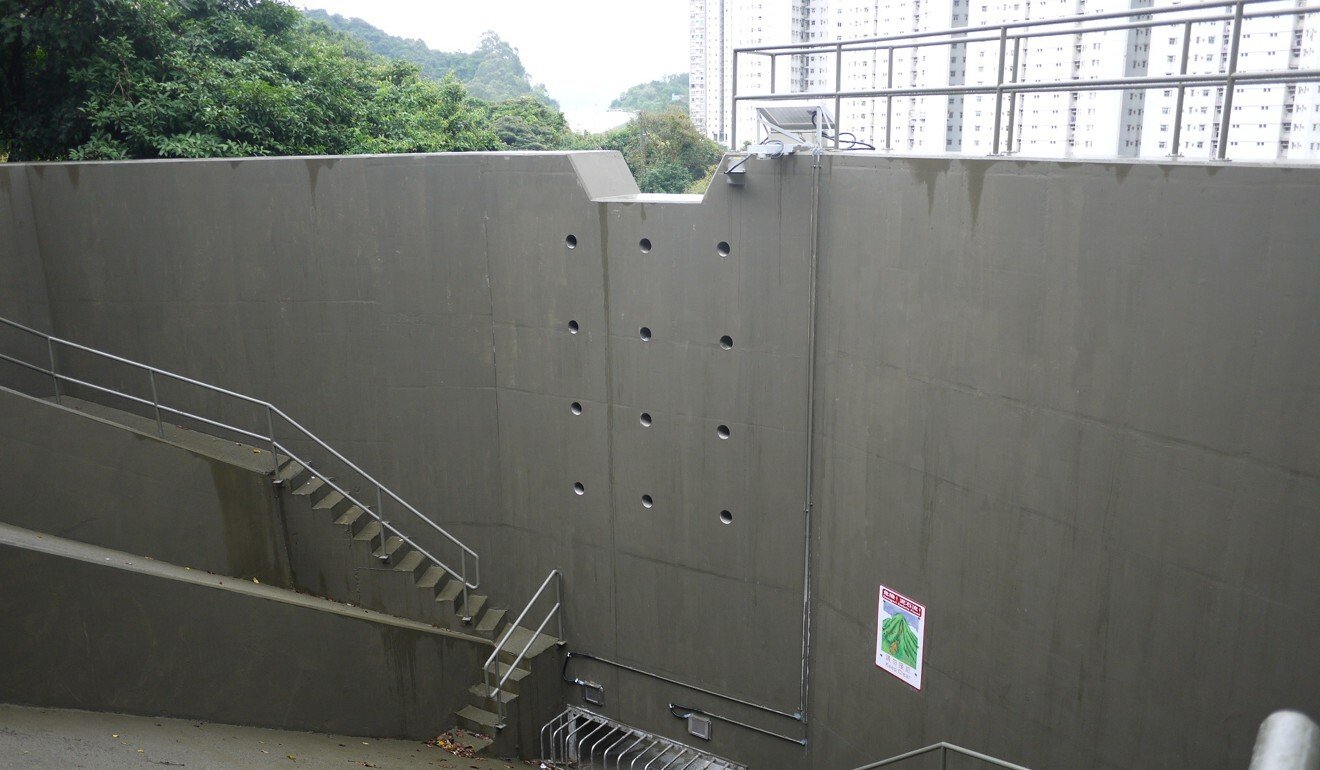
Robotic dogs, ‘Smart Barriers’ among new landslide prevention measures touted by outgoing head of Hong Kong’s Geotechnical Engineering Office
- The robotic dogs are equipped with high definition cameras and lidar sensors, and help engineers gather data in adverse conditions
- The ‘Smart Barriers’, meanwhile, can consolidate as much data in a month as human engineers can gather in half a year
Robotic dogs are the latest addition to a line-up of technological innovations designed to collect data on potential landslides in Hong Kong, which authorities have warned could happen at any time.
Pun Wai-keong, the outgoing head of the Geotechnical Engineering Office, issued the warning on Saturday as he summed up his 35 years with the department and introduced the new technologies aimed at strengthening preventive measures against landslides.
Pun said the office had commissioned two of the robotic dogs, which cost a little more than HK$100,000 each.
“These robots will greatly assist engineers by allowing them to gather data from potentially hazardous environments, such as in bad weather conditions or on steep slopes,” he said.

Nicknamed “SPOT”, the animatronic dogs sport an arsenal of devices, including high definition cameras and lidar sensors. They also have the ability to evade obstacles and manoeuvre their way through treacherous terrain.
Pun said that the robotic dogs were already being put to use collecting footage of hills and slopes all across the city.
The office also commissioned nine so-called Smart Barriers, or walls designed to stop falling debris from causing landslides.
Equipped with sensors, the walls are built on hillsides and slopes, and transmit imagery and data to artificially intelligent satellites. Pun said the data that the Smart Barriers consolidate in a month was equivalent to the amount of data that human engineers could gather in half a year.
Pun, who is retiring from the Geotechnical Engineering Office at the end of December, added that he was leaving the department in good hands.

One of the defining moments in Pun’s career was the 1992 Baguio Villa landslide, which killed two people and caused immense damage in the Pok Fu Lam area.
The landslide was triggered by torrential spring rains that caused rocks and debris to fall into the surrounding residential areas. Pun said being a part of the team that investigated the incident had sparked his drive to prevent landslides wherever possible.
Pun warned on Saturday that a landslide could happen at any moment, and said his colleagues at the geotechnical office should remain vigilant after his retirement.
“This [year] is just like 1992, when there was a period of peace. It has been 12 years since the last major landslide in 2008, and we need to be on our guard and keep educating the public about landslide awareness.” Pun said.
Hong Kong had enjoyed a few landslide-free years prior to 1992, but major incidents occurred frequently after that fateful year. Since the Baguio Villa incident, the government has stepped up initiatives dedicated to slope maintenance and landslide safety, including educational programmes for the public and regular supervision of high-risk locations for landslides.

“Our department is considered one of the best and most technologically advanced centres of landslide research in the world.” Pun said, adding that there was never a dull moment in his long career at the office.
But Pun lamented the fact that the public was increasingly unaware of the danger that landslides posed. He said that since 2008, there had not been any major landslides that caused major damage to infrastructure, nor any landslide-related deaths. As a result, Hong Kong’s younger generation had grown up without a fear of landslides rooted in their consciousness.
The last significant landslide on June 7, 2008 took place on a hillside behind the University of Hong Kong as a result of the heaviest spring rainstorm to be recorded since 1978, according to a government report.
No casualties were reported, but falling debris caused structural damage to one of the university’s car parks and other buildings. Since then, there have been no major landslides that have caused casualties or significant property damage.
